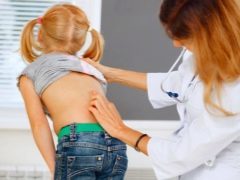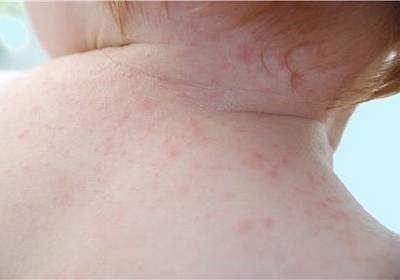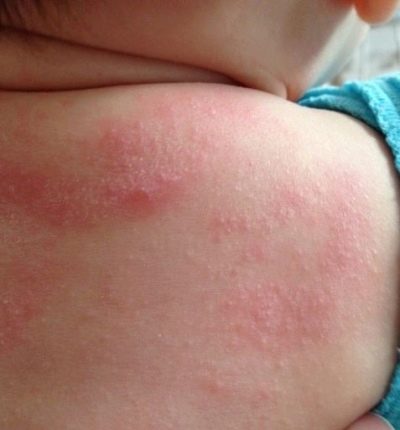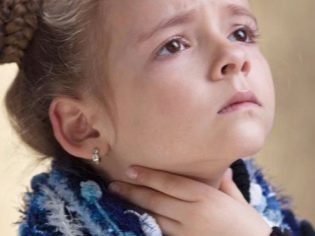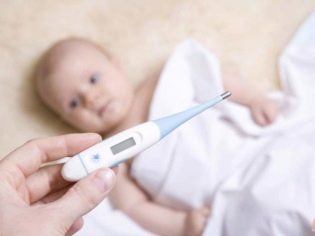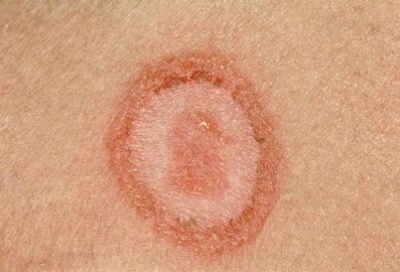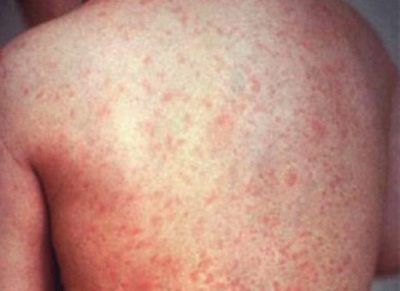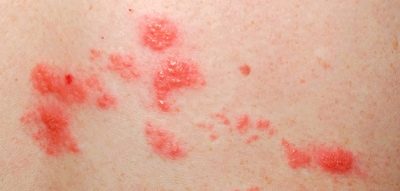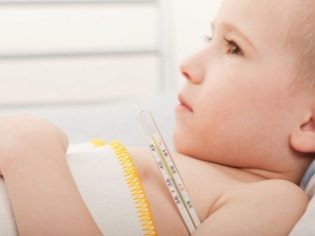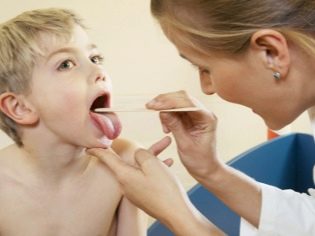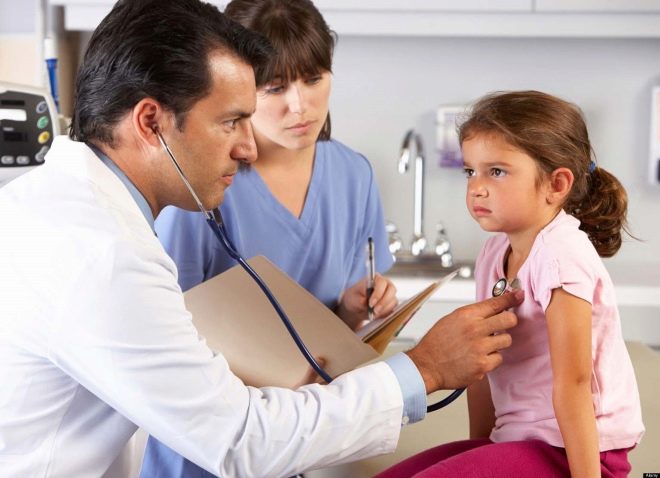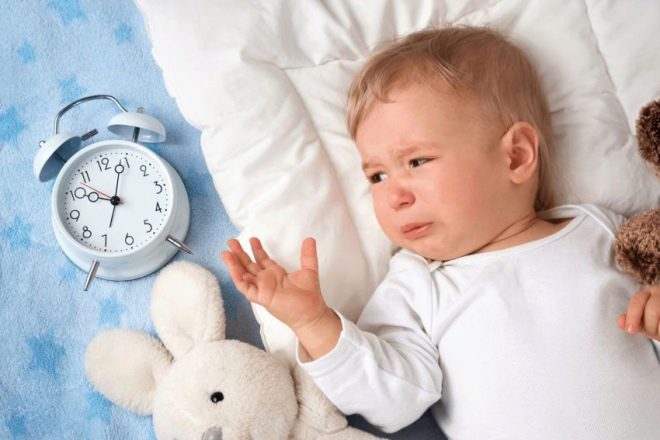What do the red spots on the child's back indicate and what to do?
A healthy child has no red spots on the back and cannot be. Any rash on this part of the body indicates that there are certain disorders in the body of the toxin. The confusion of parents who have found such spots is quite understandable, because at once it is quite difficult to understand what caused the rash, and what to do next. In this article we will try to answer all these questions.
Common causes
For infants, the most common cause of a rash on the back is prickly heat. Violation of temperature, sweating, overheating lead to disruption of the sweat glands, their ducts become inflamed, which leads to the appearance of spots in the places of sweating. A newborn has prickly heat on the back quite often, because this part of the body is almost always covered with a diaper, if the baby is swaddled. Older children have prickly heat on the back can occur in the summer, in the heat, while wearing synthetic T-shirts.
Redness on the back can be a clear symptom of contact allergies. This is how an allergy to laundry detergent with which baby and bed linen is washed, to detergent cosmetics with which the baby is bathed, and again to synthetics and semi-synthetics in clothes. Allergy - the second most common cause of spots on the back. There may be spotted on the back and contact allergies, and food, and allergies to drugs that the child could take before. It is on the back and skin of the hands that a relatively rare type of allergy to sunlight (photoallergy) usually occurs.
If the rash eruptions pass quickly enough, if you leave the skin open and provide fresh air to it, then you can’t easily get rid of allergic spots - they do not disappear anywhere, itching and itching.
The third common children's cause of rashes on the back and abdomen - infectious diseases. Chickenpox, measles, rubella, herpes virus infection, Coxsackie virus and several hundred other viral ailments are accompanied by a rash on various parts of the baby’s body, including the back. In this case, not only rashes as an alarming symptom, but accompanying infectious symptoms:
- high temperature (above 38.0 degrees);
- nausea;
- respiratory manifestations - cough and runny nose;
- sore throat;
- headaches and muscle aches;
- deterioration of health.
It can appear on the back and versicolor, with the scarlet rash have the shape of round or oval spots, they are rough, with a small bright spot and signs of peeling in the center. Also, the reason may lie in seborrheic dermatitis, which is manifested by the formation of pink or white plaques-spots on the spine, lower back, buttocks and on the sides.
Red spots may be a sign of scarlet fever, may be present as a result of a chemical or sunburn.
Spots with pustules - a sign of a bacterial infection, usually staphylococcal or streptococcal. Pyoderma and streptoderma very contagious.
If mom or dad does not have medical education, it’s quite difficult to figure out the true causes on your own. But the correct procedure for detecting stains should know every parent.
First aid and next steps
As a first aid, parents should remove the child’s shirt, jersey, and vest: everything that fits on the skin of the back. The most important tactic for moms and dads is observation.Do not rush to immediately send the child to the hospital or clinic. It is possible that crumbs have banal prickly heat, which you can cope with on your own, or an infectious infectious disease, during which contact with other children (in the same line at the clinic) is strictly prohibited in order to avoid the spread of infection.
After removing the shirt, measure the child's body temperature. If it is high, look at the throat and see if the nose is breathing. Carefully inspect the rest of the skin in search of other elements of the rash. Do not forget to examine the groin area and the scalp.
If the temperature is high, no need to go anywhere. Call the clinic and call a doctor with the wording that you suspect an infectious viral disease. They will come to your home, examine the child and prescribe adequate treatment.
In anticipation of the doctor, the child must be stripped to his underpants, put to bed, covering only with a light sheet. If the fever is too high (above 38.5 degrees for a baby or above 39.0 degrees for a child over 3 years old), give one single dose of any paracetamol-based antipyretic and provide the child with plenty of warm drink.
If nothing but a rash on the back is found, the baby is alert, you should leave it in your panties for a couple of hours. If the rash turns pale, it is prickly heat. Bathe the child with a decoction of chamomile or a string, lubricate the rash with a drying ointment, for example, "Sudokremom"Or" Desitom ". Eliminate the adverse factors that led to the formation of prickly heat: cope with the heat in the room (the recommended air temperature is 21 degrees Celsius). Change your baby's clothes from natural fabrics.
If the rash from contact with the air does not fade and does not become less, you can go to the clinic. On the way, you should remember everything that the child has eaten and drank over the past few days, whether there were new products in his diet, whether new cosmetics or detergents were used. Allergies are not excluded. The doctor will assess the degree of sensitization and prescribe treatment.
The most difficult thing is to find the source of the allergen and eliminate it. At the same time, antihistamines will be recommended for the child, and hormone therapy with ointments is also possible if the rash is widespread and severe.
Deprive and seborrhea need to be examined by a dermatologist and infectious diseases. These doctors will give parents detailed instructions with explanations of how to care for the skin and how to treat the pathology. If you suspect a lichen, you should call the doctor at home. Seborrhea is not contagious, you can go to the reception by yourself.
Bacterial infections require laboratory confirmation of the presence of Staphylococcus aureus or Streptococcus. Such an rash is treated with aniline dyes: Staphylococcus is afraid of the most common Zelenka, and Streptococcus is sensitive to Fucorzina. In rare cases, when the bacterial infection has passed into the systemic form, antibiotics are prescribed.
Tips and tricks
As long as the parents do not even approximately understand the reason for the appearance of rashes on the back of the child, his communication with other children in the family, if any, should be limited. Deprive is very contagious, as is streptococcal infection. Parents should make sure that children do not use shared toys, dishes, towels, bedding. In any case, it is better to be safe than to treat the whole family for an unpleasant contagious infectious disease.
Do not give your child independent treatment. All of the above reasons require a traditional medical approach. Folk remedies will not be effective neither with chills, nor with a viral or bacterial infection. And with an allergic rash, they can increase the sensitization and worsen the child's condition.
The only kind of stains on the back that should not cause anxiety in parents is a birthmark. All other rashes need supervision and expert advice.
About the causes of any rash in the child and the necessary actions by parents, see below.
